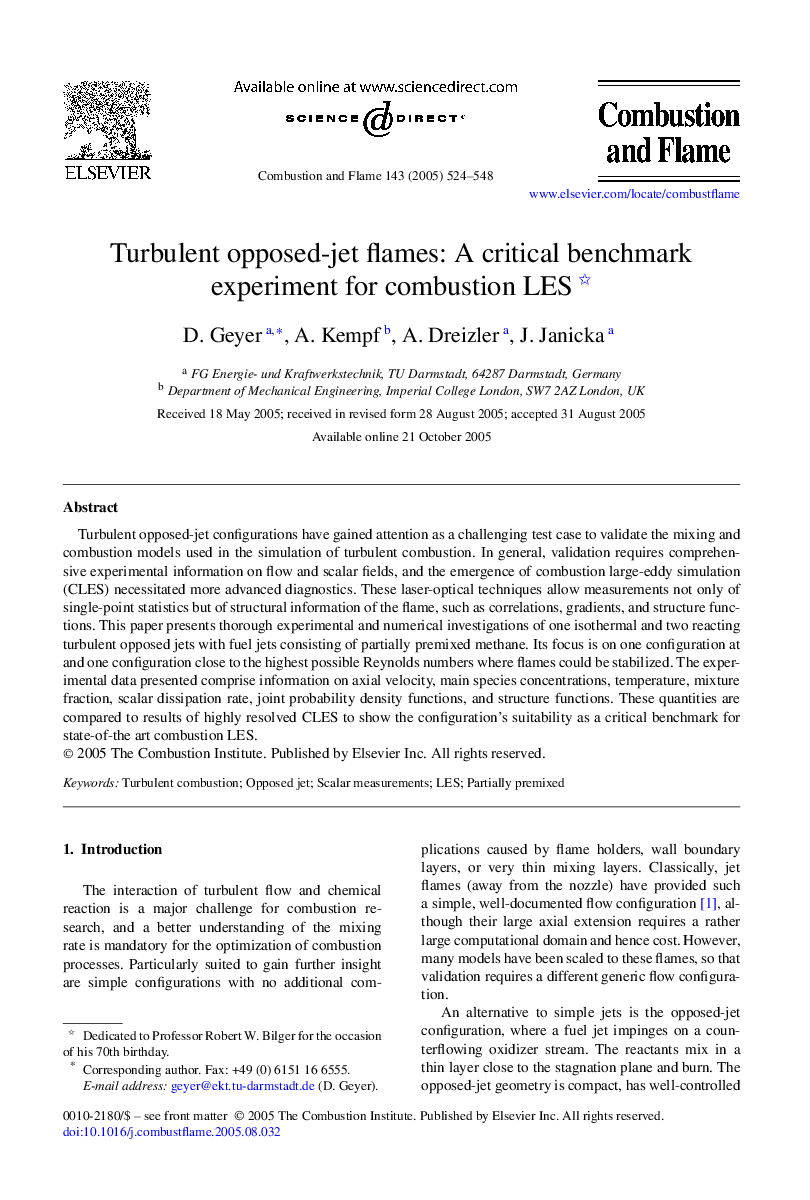| Article ID | Journal | Published Year | Pages | File Type |
|---|---|---|---|---|
| 10264413 | Combustion and Flame | 2005 | 25 Pages |
Abstract
Turbulent opposed-jet configurations have gained attention as a challenging test case to validate the mixing and combustion models used in the simulation of turbulent combustion. In general, validation requires comprehensive experimental information on flow and scalar fields, and the emergence of combustion large-eddy simulation (CLES) necessitated more advanced diagnostics. These laser-optical techniques allow measurements not only of single-point statistics but of structural information of the flame, such as correlations, gradients, and structure functions. This paper presents thorough experimental and numerical investigations of one isothermal and two reacting turbulent opposed jets with fuel jets consisting of partially premixed methane. Its focus is on one configuration at and one configuration close to the highest possible Reynolds numbers where flames could be stabilized. The experimental data presented comprise information on axial velocity, main species concentrations, temperature, mixture fraction, scalar dissipation rate, joint probability density functions, and structure functions. These quantities are compared to results of highly resolved CLES to show the configuration's suitability as a critical benchmark for state-of-the art combustion LES.
Related Topics
Physical Sciences and Engineering
Chemical Engineering
Chemical Engineering (General)
Authors
D. Geyer, A. Kempf, A. Dreizler, J. Janicka,
